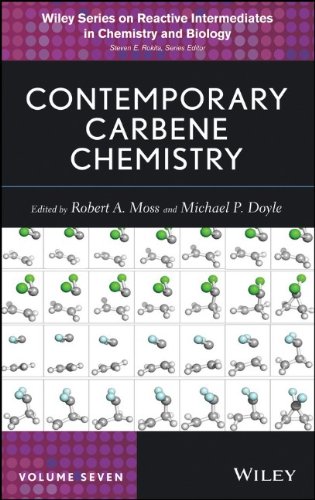

Most ebook files are in PDF format, so you can easily read them using various software such as Foxit Reader or directly on the Google Chrome browser.
Some ebook files are released by publishers in other formats such as .awz, .mobi, .epub, .fb2, etc. You may need to install specific software to read these formats on mobile/PC, such as Calibre.
Please read the tutorial at this link: https://ebookbell.com/faq
We offer FREE conversion to the popular formats you request; however, this may take some time. Therefore, right after payment, please email us, and we will try to provide the service as quickly as possible.
For some exceptional file formats or broken links (if any), please refrain from opening any disputes. Instead, email us first, and we will try to assist within a maximum of 6 hours.
EbookBell Team

5.0
100 reviewsPresents the most innovative results in carbene chemistry, setting the foundation for new discoveries and applications
The discovery of stable carbenes has reinvigorated carbene chemistry research, with investigators seeking to develop carbenes into new useful catalysts and ligands. Presenting the most innovative and promising areas of carbene research over the past decade, this book explores newly discovered structural, catalytic, and organometallic aspects of carbene chemistry, with an emphasis on new and emerging synthetic applications.
Contemporary Carbene Chemistry features contributions from an international team of pioneering carbene chemistry researchers. Collectively, these authors have highlighted the most interesting and promising areas of investigation in the field. The book is divided into two parts:
All the chapters conclude with a summary of the current situation, new challenges on the horizon, and promising new research directions. A list of key reviews and suggestions for further reading also accompanies every chapter.
Each volume of the Wiley Series on Reactive Intermediates in Chemistry and Biology focuses on a specific reactive intermediate, offering a broad range of perspectives from leading experts that sets the stage for new applications and further discoveries.Content:
Chapter 1 Carbene Stability (pages 1–39): Scott Gronert, James R. Keeffe and Rory A. More O'Ferrall
Chapter 2 Stable Carbenes (pages 40–74): Jonathan P. Moerdyk and Christopher W. Bielawski
Chapter 3 Acid–Base Chemistry of Carbenes (pages 75–106): AnnMarie C. O'Donoghue and Richard S. Massey
Chapter 4 Computational Methods for the Study of Carbenes and their Excited States (pages 107–130): Hoi Ling Luk, Shubham Vyas and Christopher M. Hadad
Chapter 5 Dynamics in Carbene Reactions (pages 131–165): Dina C. Merrer, K. N. Houk and Lai Xu
Chapter 6 Ultrafast Kinetics of Carbene Reactions (pages 166–192): Gotard Burdzinski and Mathew S. Platz
Chapter 7 Tunneling in the Reactions of Carbenes and Oxacarbenes (pages 193–215): Dennis Gerbig and Peter R. Schreiner
Chapter 8 Carbodicarbenes (pages 216–236): Gernot Frenking and Ralf Tonner
Chapter 9 Catalytic Reactions with N‐Mesityl‐Substituted N‐Heterocyclic Carbenes (pages 237–273): Jessada Mahatthananchai and Jeffrey W. Bode
Chapter 10 Supramolecular Carbene Chemistry (pages 274–323): Udo H. Brinker, Jean‐Luc Mieusset and Murray G. Rosenberg
Chapter 11 Modern Lithium Carbenoid Chemistry (pages 325–362): Vito Capriati
Chapter 12 Rhodium Carbenes (pages 363–403): Huw M. L. Davies and Brendan T. Parr
Chapter 13 Ruthenium Carbenes (pages 404–451): Steven T. Diver and Jonathan M. French
Chapter 14 Nucleophilic Carbenes of the Chromium Triad (pages 452–490): Zachary J. Tonzetich
Chapter 15 Cobalt‐Mediated Carbene Transfer Reactions (pages 491–525): Xin Cui and X. Peter Zhang
Chapter 16 Gold Carbenes (pages 526–551): Liming Zhang